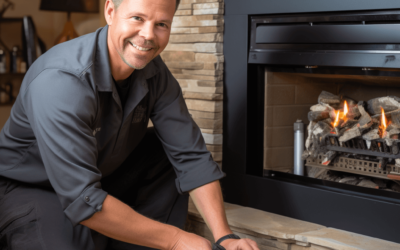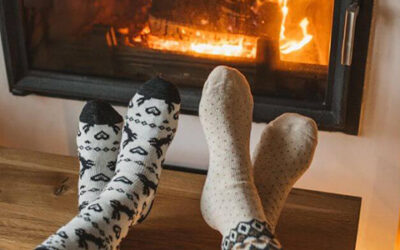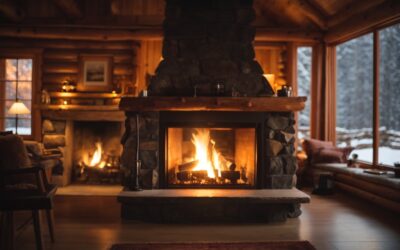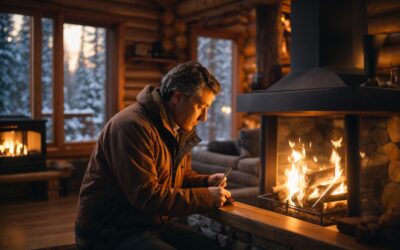Gas Fireplace Service
One of the biggest advantages of gas fireplaces over traditional wood-burning fireplaces is convenience. Unlike wood-burning fireplaces, gas fireplaces provide heat at the flick of a switch. Additionally, with gas fireplaces, you don’t have to worry about all that ash and soot in your chimney. Gas fireplaces are also one of the best options when it comes to outdoor firepits and living spaces. This is because the “on-demand” convenience of gas fireplaces gives you complete control over when you want the fireplace or firepit to be on or off—it’s as easy as flipping a switch.
The cost savings is also a concern for many homeowners. A common question many homeowners are is, “are gas fireplaces more economical than the wood-burning counterparts?” According to a study done by Woodland Direct, gas logs saved consumers an average of just over 40% on average.
Gas fireplaces are typically broken up into two types of categories: vented and ventless. When contacting
Whether you have a ventless or vented insert,

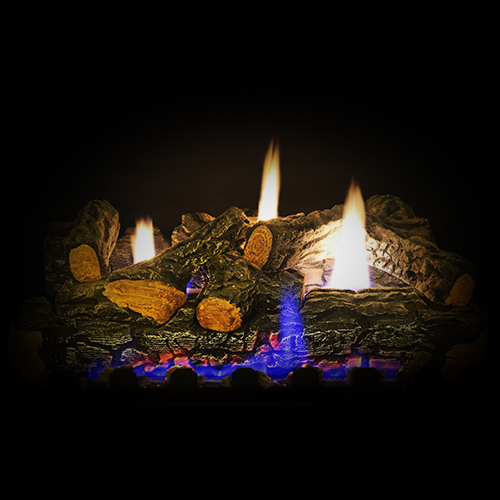
GAS FIREPLACE INSPECTIONS
Did you know that your gas fireplace and outdoor
Proper maintenance can eliminate remedy problems with gas fireplaces before they become bigger issues. Because proper maintenance and inspections often involve gas lines, inspection is not something the average homeowner should take on. We highly recommend contacting
During a normal inspection, we typically evaluate the following:
- Exterior. While a certain degree of wear and tear might be expected, evaluating the exterior of a gas fireplace may reveal signs of damaged glass doors, vents, and other structural components.
- Interior. Checking the interior of the fireplace may reveal problems with the gas valves, pilots, or thermocouples. These components help ensure gas is flowing to the fireplace in a safe manner. During an inspection,
Northco Fire also checks for things like dust buildup, dirt, and, yes, even bugs and spiders. These things can not only result in fireplace inefficiencies but also flammable hazards. - Damper. Perhaps one of the most important elements of a gas log fireplace is the damper. The damper allows combusted gasses to escape through the chimney or ventilation systems built into the fireplace. Dampers must be opened at all times when gas fireplaces or wood-burning fireplaces are in use. However, if you have a ventless fireplace, you may not have a damper. A thorough inspection of this fireplace component could save your life from exhaust and harmful vapors.
- Flue. The flue of a fireplace should be inspected annually for safety and proper functionality according to the National Fire Protection Agency. The flue is the part of the fireplace that helps force harmful combustion gasses outside. When a flue isn’t working properly, these harmful
gases could prove fatal. In addition to regular inspections,Northco Fire recommends the installation of carbon monoxide sensors in your home.
MORE GAS FIREPLACE RESOURCES
5 Expert Tips on How to Clean and Maintain Your Gas Fireplace
If you're like most people, you love spending time in your cozy gas fireplace on cold winter days in Northern Colorado. But before you can enjoy those fires, it's important to take care of them! In this article, we'll provide you with six expert tips on how to clean...
Winter Maintenance Fireplace Tips for Gas Fireplaces
As the cold winds of winter approach, there's nothing quite as comforting as the warm, flickering glow of a gas fireplace. Gas fireplaces offer a convenient and efficient way to heat your home while creating a cozy ambiance. However, to ensure that your gas fireplace...
Winter Fireplace Prep 101: Your Seasonal Maintenance Checklist
As the days grow shorter and the temperature drops, there's nothing quite like the cozy warmth of a crackling fire to make your home feel inviting and comfortable. If you're fortunate enough to have a gas fireplace, you already know its convenience and efficiency....
Maximizing Heat and Minimizing Risk: Winter Gas Fireplace Care
As the cold temperatures of winter approach, many homeowners turn to their trusty gas fireplaces to provide warmth and comfort. Gas fireplaces have become a popular choice due to their convenience and efficiency in heating homes. They offer the allure of a real fire...

